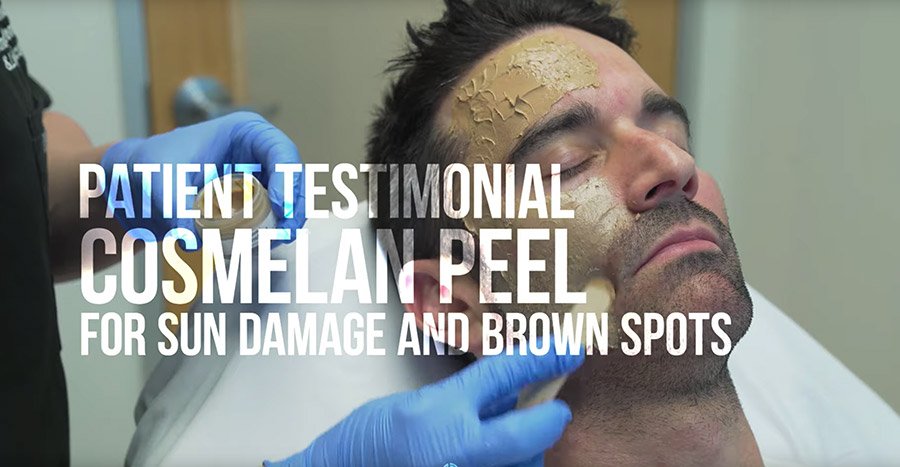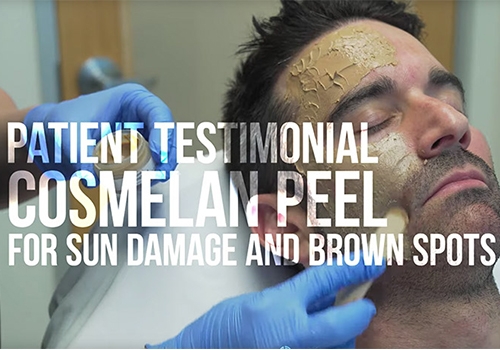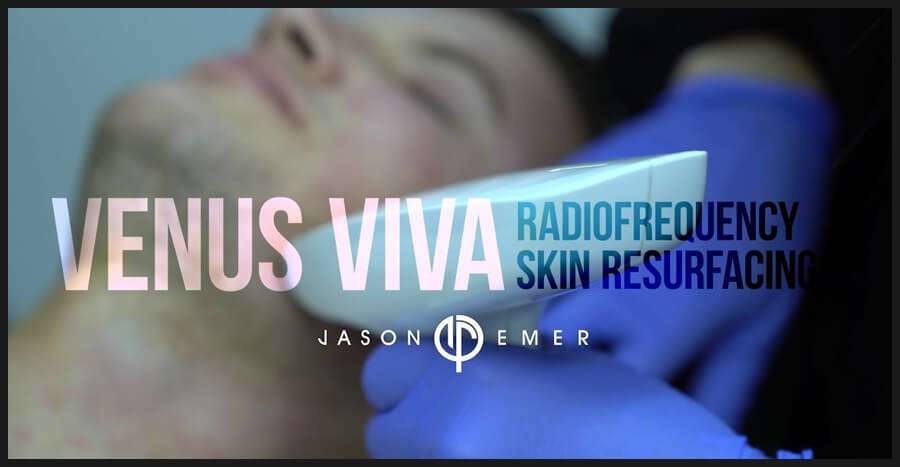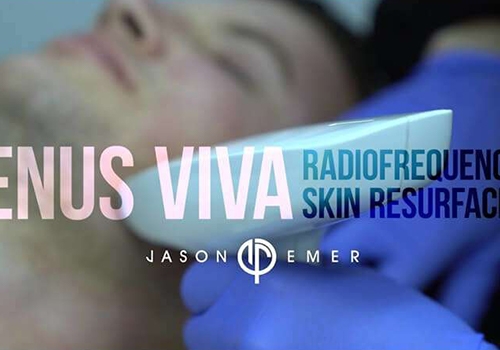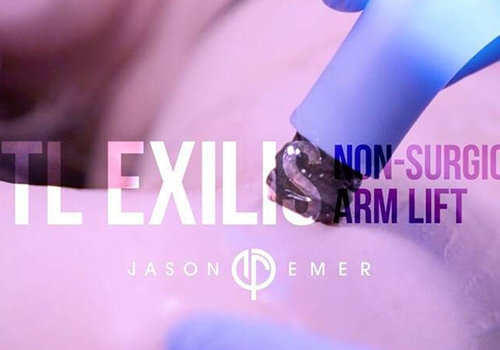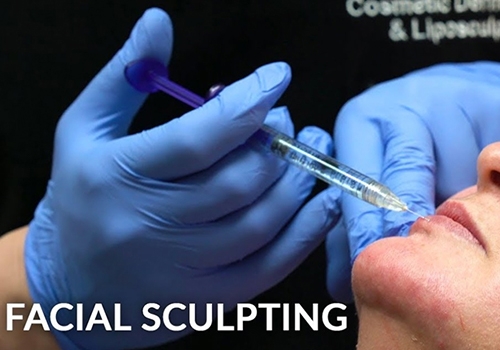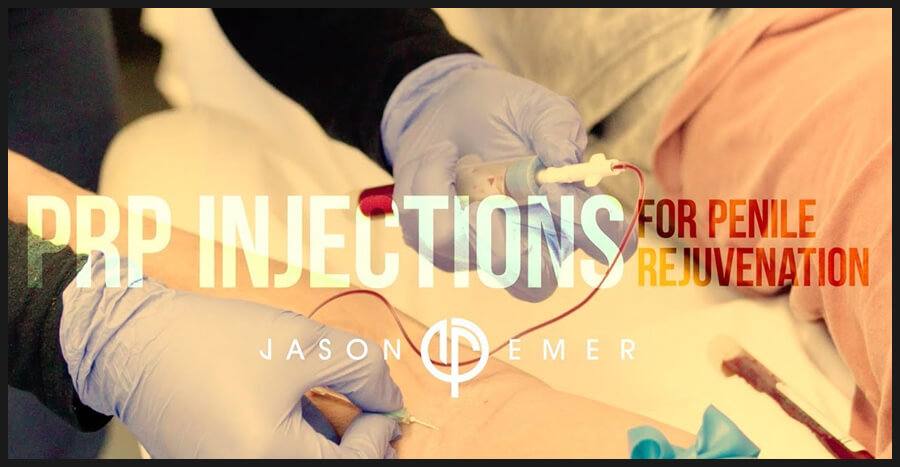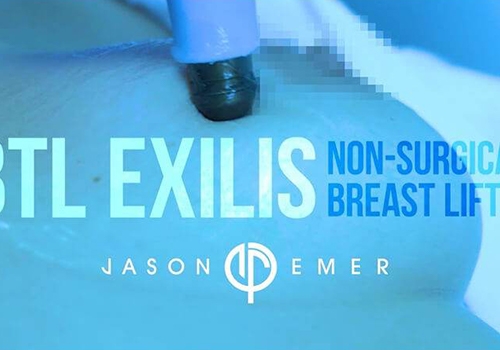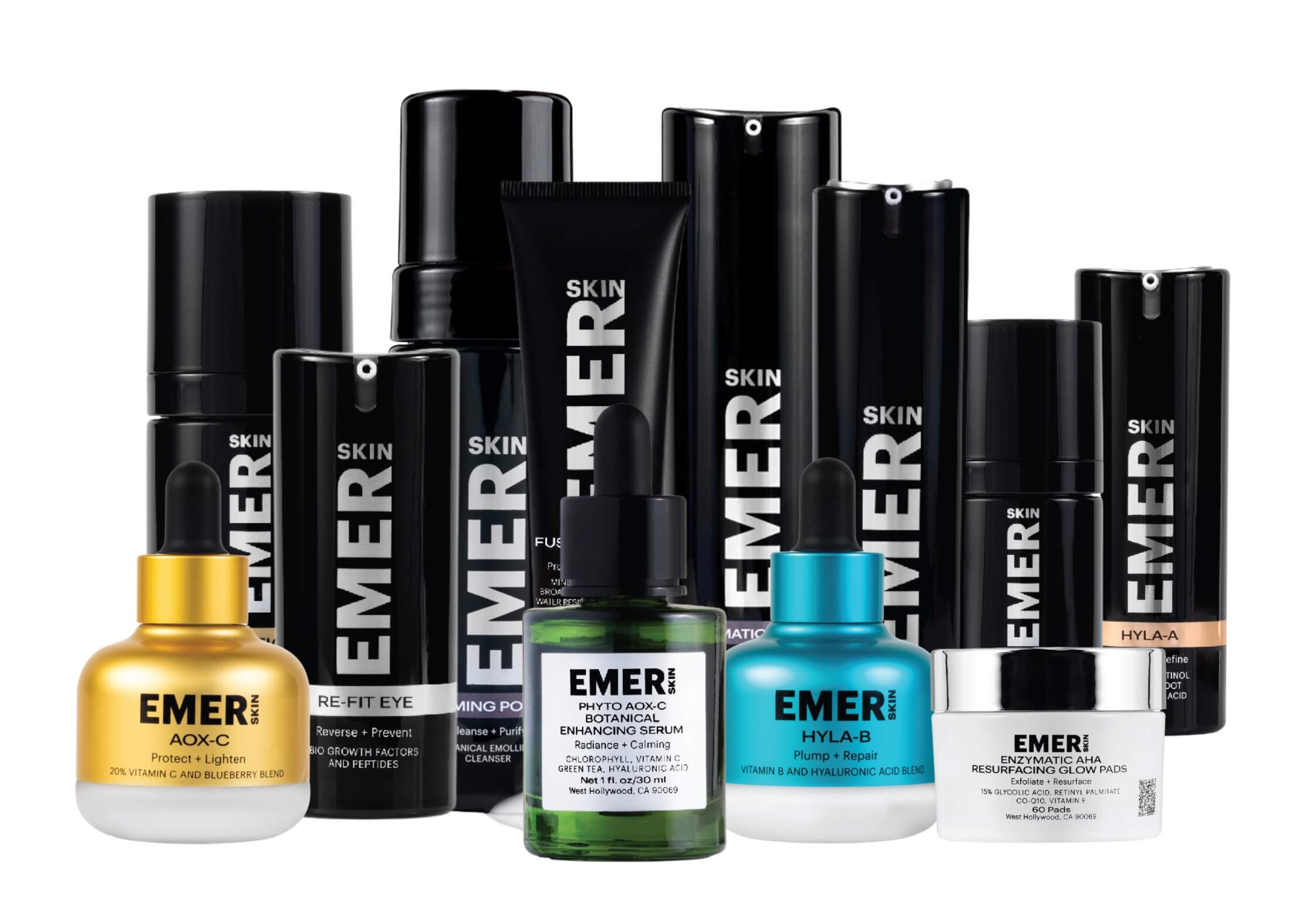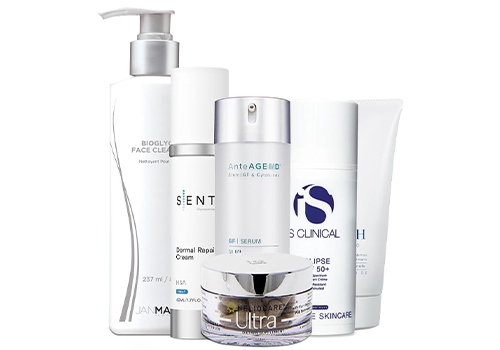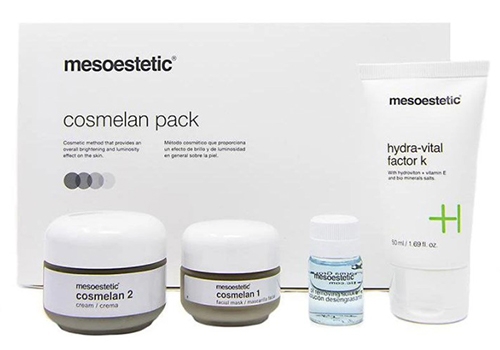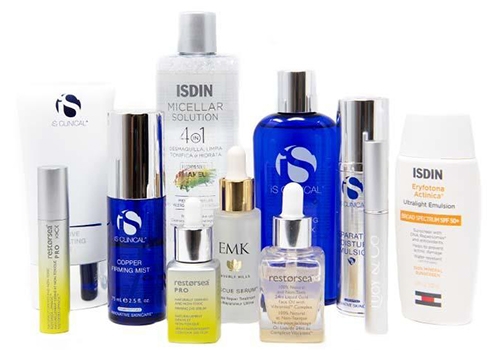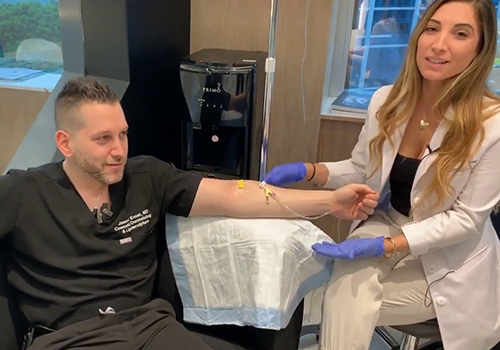MELASMA
Conveniently located to serve Beverly Hills, Hollywood, Los Angeles, NYC, and Miami.
While it does not indicate any threat to a patient’s health, melasma causes patches of abnormal pigmentation that may not fit into a person’s aesthetic ideals for his or her appearance. Fortunately, there are treatment options for this pigmentation issue. Board-certified dermatologist Dr. Jason Emer is a renowned provider of hyperpigmentation treatments, including treatments for melasma in Beverly Hills.
WHAT IS MELASMA?
Melasma, or chloasma, is a skin condition that involves uneven skin coloration. It results when melanocytes, or melanin-producing cells, form an excess of skin pigmentation.
Causes include ultraviolet light exposure, genetics, and hormonal imbalances. The blue light emitted from LED screens, such as those of cell phones, televisions, and laptops, can contribute to melasma as well.
Melasma is most likely to form on skin that is frequently exposed to the sun. The forehead, nose, cheeks, upper lip, chin, neck, arms, and back are common areas affected by melasma.
In many cases, Dr. Emer can diagnose melasma by examining the discolored skin. To identify the exact depth of the irregular pigmentation, a Wood’s lamp, or black light, can be used. This device can spotlight differences in fluorescence within the skin pigment to make it easier to see the extent of the condition.
The black light assists Dr. Emer in identifying the type of melasma present. There are three classifications of melasma:
DERMAL
This type of melasma does not have well-defined borders and may be bluish or light brown. Its appearance doesn’t differ when observed under a black light. Dermal melasma is the most difficult to treat.
EPIDERMAL
Melasma that presents as dark brown patches of skin with distinct edges is called epidermal melasma. Under a black light, epidermal melasma is quite obvious. Successful treatment of epidermal melasma is possible.
MIXED
Mixed melasma is more common than dermal and epidermal cases. It is characterized by brown and bluish colors. When examined with a black light, it appears to have a mixed pattern. Mixed melasma can be improved to varying degrees with treatment.
RIGHT FOR YOU?
AM I A CANDIDATE FOR MELASMA TREATMENT?
If you are worried about bluish or brown patches of skin, Dr. Emer can diagnose your skin condition and assess your candidacy for melasma treatment in a consultation. Patients with chronic melasma will require dermatological intervention to minimize the appearance of the hyperpigmentation.
Candidates for melasma treatment must be generally healthy. It is best if patients are non-smokers, though smokers can still be candidates if they are willing to cease smoking for a period of time.
Realistic expectations are essential for candidacy. Melasma is a challenging skin condition to treat, and what works for one patient may not work for another. You may need to try more than one treatment approach and/or undergo a combination of minimally invasive procedures in order to get the results you want.
Some cases of melasma are temporary and resolve without the need for treatment once the causal factor, such as taking a particular medication, is eliminated. Dr. Emer will ask you several important questions to determine whether you have temporary or chronic melasma. These inquiries will cover details like how and when the hyperpigmentation appeared, medicines you are taking, and relevant questions about your lifestyle.
CONDITION DETAILS
WHO DOES MELASMA AFFECT?
A family history of melasma increases the likelihood that you will develop this skin condition. It is more common among those with darker skin tones than in those with lighter skin. If you spend significant time in the sun or tanning beds and/or live in a geographical area with stronger than average UV radiation, you are more likely to be affected by melasma.
Melasma is much more prevalent in women than in men. The probability of experiencing melasma is particularly high among women who are in their reproductive years, take hormones, and/or use oral contraceptives.
Pregnancy is another factor that makes women more susceptible to developing melasma. This is thought to be related to the increased progesterone and estrogen hormones that accompany pregnancy. Melasma is commonly referred to as the “mask of pregnancy” since so many women experience this skin condition during pregnancy. Pregnancy-related melasma symptoms may dissipate after childbirth.
There are some types of medication that can contribute to a patient’s development of melasma. Anti-seizure medications have been connected to melasma formation.
Additionally, medications that cause phototoxicity, or sun-sensitivity, can trigger this skin condition. Sensitivity to sunlight is a side effect of some antibiotics, blood pressure medications, and retinoids. Stopping the medication may or may not clear the melasma symptoms.
Thyroid disorders can also make you more vulnerable to melasma. In some instances, correcting the thyroid issue also resolves the hyperpigmentation.
WHAT TREATMENTS ARE AVAILABLE FOR MELASMA?
The course of treatment varies in relation to the patient’s skin tone, skin type, and other factors. The depth and severity of the hyperpigmentation is an important factor in determining a treatment approach as well.
At Dr. Emer’s medical practice in Beverly Hills, melasma treatments can include one or more of the following interventions:
TOPICAL MEDICATIONS
Medicinal creams can be an effective intervention for some melasma cases. Prescription topical creams like hydroquinone and tretinoin can provide a skin-lightening effect. Regular use is required for noticeable results. These products can cause skin irritation, dryness, and/or redness, so prescription melasma creams may not be well-tolerated by patients with sensitive skin.
CHEMICAL PEELS
Chemical peels that contain salicylic acid or glycolic acid can help to even out the skin tone. Cosmelan peels are often Dr. Emer’s preferred chemical peel for patients with melasma. Cosmelan works on its own to reduce the production of melanin in the skin, is an excellent pre-treatment for laser skin treatments, and is safe for every skin type. Dr. Emer also regularly performs SilkPeel Dermalinfusion peels for melasma patients.
LASER SKIN RESURFACING
Dr. Emer frequently follows chemical peels with a laser skin treatment with Venus Viva or Clear + Brilliant. Three or four sessions at four-week intervals usually produces the greatest improvements.
MICRONEEDLING
To prevent melasma from recurring and to encourage and support optimal healing after laser skin resurfacing, a microneedling procedure may be recommended. The tiny wounds created during this treatment stimulate the body’s healing process. Two or more microneedling sessions may be needed to best address melasma.
RED LED LIGHT THERAPY
The wavelengths of red LED light have anti-inflammatory benefits. This treatment helps to rejuvenate and heal skin cells, making this therapy a valuable complement to other melasma treatments. Dr. Emer’s preferred delivery for red LED light therapy for melasma is a LightStim bed.
SYLFIRM X
Sylfirm X is a radiofrequency (RF) microneedling device that is ideal for many patients’ melasma concerns. This advanced system uses repeated ultra-short pulse (RP) microneedling technology. RP technology and Sylfirm X’s robotic system allows Dr. Emer to precisely target tissue affected by hyperpigmentation and vascular irregularities. This gentler microneedling approach is safe for patients with darker skin and can be used even in delicate areas, such as around the eyes.
VITAMIN C SERUM
Dr. Emer incorporates specially formulated vitamin C serums into many melasma treatments. The antioxidants present in vitamin C support healthy skin, and this essential vitamin also inhibits tyrosinase, which is an enzyme the body requires to produce melanin.
WHAT CAN I DO TO PREVENT MELASMA?
While melasma associated with a genetic predisposition, hormonal fluctuations, pregnancy, and the need for certain medications can complicate prevention efforts, there are still steps you can take to reduce the potential of triggering melasma.
MINIMIZE UV LIGHT EXPOSURE
There are many ways to reduce the likelihood of phototoxicity-induced melasma. Any use of tanning beds should be ceased, as this UV light has the same detrimental effects as that of natural sun rays.
When it comes to UV light from the sun, diligent, frequent sunscreen application is absolutely crucial if your goal is to avoid exacerbating existing hyperpigmentation and/or prevent new patches of melasma from appearing. No matter the weather, sun protection should be a priority.
As an added measure of risk reduction, you should take care to plan outdoor activities around the most intense periods of UV radiation. Wearing protective clothing, long sleeves, and wide-brimmed hats can offer additional preventative benefits.
Selecting an appropriate broad spectrum sunscreen product is essential. You want to choose a product with an SPF of at least 30. It is also important to avoid using sunblock that contains ingredients known to cause pigmentation issues and/or to disrupt hormonal balance. Dr. Emer can advise you regarding safe sunscreen products for your skin.
CUSTOMIZED SKIN CARE REGIMEN
Scented soaps and certain topical skin products are thought to contribute to the formation and worsening of melasma. Harsh cleansers and irritating skin products may cause melanocytes to produce additional pigment, which can cause melasma patches to darken.
It can be difficult to discern what skin care products are suitable for your skin, but a board-certified dermatologist like Dr. Emer can help. Dr. Emer is passionate about helping patients access high-functioning skincare products crafted from top-quality ingredients.
For years, patients have relied on his input for the ideal cleansers, moisturizers, anti-aging, wrinkle-reducing, and irritation-relief products for their skin. He has assisted many melasma patients in managing chronic hyperpigmentation issues with a targeted skin care treatment consisting of advanced skincare products with science-backed ingredients.
WHAT TO EXPECT AFTER A MELASMA TREATMENT
The recovery period after a melasma treatment varies based on the procedure(s) performed, though minimal downtime is typically required. Laser skin resurfacing for melasma can involve a one-to-two-week recovery period. Recovery from microneedling usually takes two days or less. No significant recovery is associated with red LED light therapy treatments.
IS MELASMA A SIGN OF A DANGEROUS HEALTH ISSUE?
Melasma is not a precursor to cancer or an indication of other serious health risks. However, some skin cancers have a similar appearance to melasma, so it is generally advisable to have a dermatologist perform an evaluation if you develop hyperpigmentation.
HOW MUCH DOES MELASMA TREATMENT COST?
The type of melasma being addressed, the procedures involved, and other factors impact the price of melasma treatment. You’ll be apprised of all fees associated with your personalized hyperpigmentation protocol during your consultation.
ARRANGE A CONSULTATION
If you are seeking treatment for melasma in Beverly Hills, contact our office to schedule a consultation with Dr. Emer. Dr. Emer is exceptionally educated and experienced in resolving skin discoloration conditions like melasma and will take the time to craft a customized treatment that works for you.
